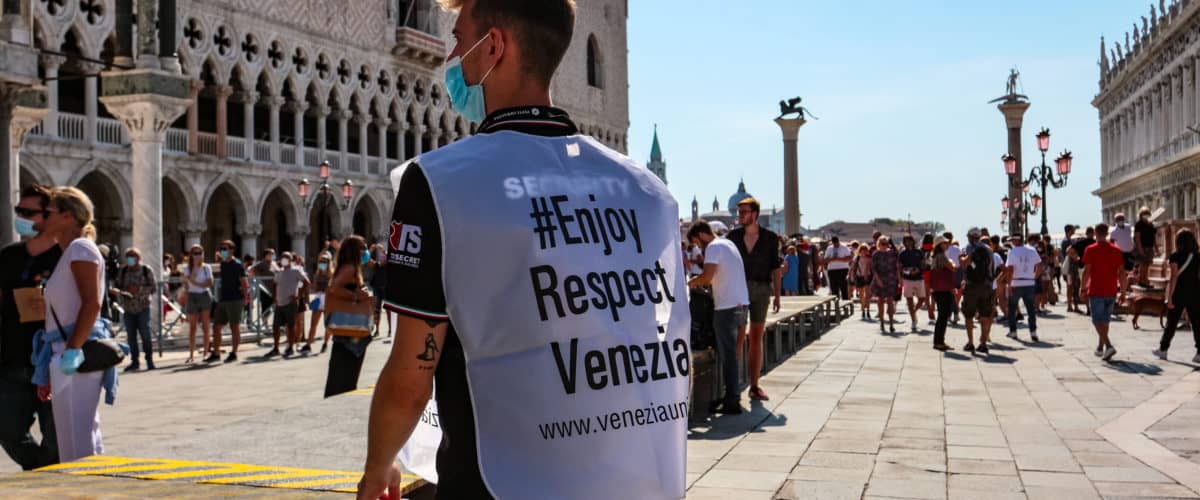Who does not love to travel and see new places? In the recent era tourism industry has become more popular with all groups of people. Although the tourism industry is booming, we need to move towards a more sustainable tourism model, and that's why we're having this discussion today.
The COVID-19 pandemic has impacted all sectors and people’s lives, particularly the tourism sector, which has been affected so hard, but its resilience will hopefully help it recover soon. In contrast, congested hotspots and the industry’s contribution to global carbon emissions are among the most often voiced public critiques; the boom of tourism in earlier decades brought about volumes and practices that jeopardized the industry’s sustainability.
The Need for Sustainable Tourism
According to Sustaining Tourism’s website, there were 527 million foreign visitors in 1995, which increased to 1.4 billion in 2019. The average foreign tourist receipt is over 700 US dollars per person, and they add that travel and tourism accounted for 10% of the overall GDP. They created 10.4% of direct and indirect employment in 2019. Therefore, it is evident that tourism has a significant economic influence on local economies, and the sector is still expanding at an astounding rate. Although the advantages and opportunities that tourism brings are welcomed almost everywhere, there is a growing understanding of the need to place tourism within its environmental context. A study published in 2018 by Nature Climate Change suggested that tourism accounts for 8% of global greenhouse gas emissions, which is a substantial percentage when considering all possible emissions sources. Therefore, it is imperative to acknowledge the interdependence of tourism and the environment and to work to strengthen the positive relationship between tourism, the environment, and economic development, thus sustainable tourism. Let’s look at what Sustainable tourism is.
What is Sustainable Tourism?

Sustainable tourism refers to financially successful travel but doesn’t damage the resources that tourism will need in the future, particularly the natural environment and the host community’s culture. In other words, sustainable tourism must not jeopardize the ability of future generations to satisfy their own needs to meet the demands of visitors.
Positive Aspects of Sustainable Tourism
There are several benefits of sustainable tourism. They are –
- Economic Benefits: Sustainable tourism creates a higher employment rate and more money and resources. Improved infrastructure, including buildings and transport systems, helps countries’ overall economic and social development.
- Social Benefits: Due to sustainable tourism, there are increased events and celebrations, which is an excellent opportunity for people to meet and greet. Also, the Conservation of heritage, including architecture and natural sites, helps maintain social and cultural values.
- Cultural benefits: Sustainable tourism improves understanding of different cultures and traditions. Although it commercializes art and culture from a business and economic perspective, it also helps preserve local cultures.
- Environmental benefits: Building new natural parks and areas of outstanding natural beauty helps grow the environment. Also, it helps in reducing the number of animal poaching. Moreover, it increased funding for nature conservation and protection.
Negative Aspects of Sustainable Tourism
Tourism has adverse environmental effects when the amount of tourist usage exceeds the environment’s capacity to handle this use.
- Numerous natural areas across the world are potentially threatened by direct conventional tourism.
- It may place a great deal of strain on a region, including soil degradation, increased pollution, leakage into the sea, loss of natural habitat, more tremendous pressure on endangered species, and increased susceptibility to forest fires.
- It frequently strains water supplies and might make local communities fight for access to vital resources.

The negative aspects, in more specific terms, are-
- Wild habitat damage brought on by modern infrastructure
- Weakening of natural disaster resistance
- Hotels and parking lots spoil picturesque landscapes.
- Deforestation
- due to a surge in population, there is excessive water consumption
- Air pollution due to the usage of massive traffic
- damage to the environment brought on by trash
- Due to rising noise levels, wildlife has relocated
- increased energy use
- more energy use Ocean plastic waste harming marine life
Improving Sustainable tourism
Promoting and encouraging rural and community tourism can also enhance sustainable tourism.
Rural tourism

Rural tourism is one form of sustainable tourism. It must take place away from big cities and emphasizes actively engaging in a rustic way of life. In rural tourism, visitors frequently stay with locals, learn about their way of life, and even assist with hard labor. Rural tourism is more sustainable, even though it is more of an ecotourism subset. This is because it promotes rural living, supports locals, and avoids large numbers of visitors in one area at once.
Community Tourism
Another excellent example of sustainable tourism is community tourism. Since it lies in the polar opposite of mainstream tourism, typically, locals and communities welcome visitors to stay with them and may provide a variety of shows, games, and adventures. While this could resemble rural tourism, it need not emphasize the natural environment. Community tourism’s primary goal is to give local communities more control over the planning, executing, and managing tourism-related actions in their home areas. Tourists will profit economically while also getting to experience real life.

Sustainable tourism is refocusing and adapting toward a sustainable world. It depends on every sector. Therefore the economic, social, and primarily environmental aspects of sustainable tourism need to be reconsidered for the well-being of the tourist, local community, and planet.
Photo: petrmalinak/Shutterstock
You might also like:
Support us!
All your donations will be used to pay the magazine’s journalists and to support the ongoing costs of maintaining the site.
Share this post
Interested in co-operating with us?
We are open to co-operation from writers and businesses alike. You can reach us on our email at [email protected]/[email protected] and we will get back to you as quick as we can.









